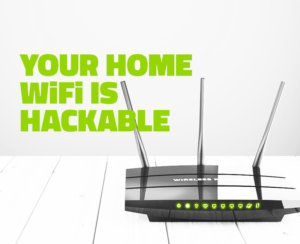Security Challenges and Solutions in Mobile Wi-Fi Networks
admin February 26, 2024 0
Title: Security Challenges and Solutions in Mobile Wi-Fi Networks
- Introduction
- Overview of the growing reliance on mobile Wi-Fi networks
- Importance of addressing security concerns in these networks
- Security Threats in Mobile Wi-Fi Networks
- Unauthorized Access: Exploiting weak or default passwords, MAC spoofing
- Eavesdropping: Intercepting data packets transmitted over the air
- Man-in-the-Middle Attacks: Intercepting and altering communications between devices
- Rogue Access Points: Unauthorized access points posing as legitimate networks
- Denial of Service (DoS) Attacks: Disrupting network availability and services
- Phishing and Social Engineering: Tricking users into revealing sensitive information
- Solutions to Address Security Challenges
- Encryption Protocols: Implementing WPA3, WPA2-Enterprise, or VPNs for data encryption
- Strong Authentication Mechanisms: Utilizing multi-factor authentication, certificate-based authentication
- Network Segmentation: Partitioning the network to limit the impact of breaches
- Intrusion Detection Systems (IDS) and Intrusion Prevention Systems (IPS): Monitoring and blocking malicious activities
- User Education and Awareness: Training users to recognize and respond to security threats
- Regular Security Audits and Updates: Assessing network vulnerabilities and applying patches
- Adoption of Advanced Technologies: Implementing AI-driven security solutions for threat detection
- Role of Network Administrators and Service Providers
- Monitoring and Managing Network Traffic: Identifying and responding to security incidents
- Providing Secure Configuration Guidelines: Offering best practices for configuring Wi-Fi networks securely
- Collaborating with Security Experts: Consulting with cybersecurity professionals to enhance network security
- Continuous Improvement: Updating security measures to address evolving threats and vulnerabilities
- Case Studies and Examples
- Real-world examples of security breaches in mobile Wi-Fi networks
- Success stories of organizations implementing effective security solutions
- Conclusion
- Recap of the importance of addressing security challenges in mobile Wi-Fi networks
- Encouragement for proactive measures to safeguard network infrastructure and user data
Introduction
Introduction:
In an increasingly interconnected world, the reliance on mobile Wi-Fi networks has become pervasive, offering users the flexibility and convenience of wireless connectivity on the go. From smartphones and tablets to laptops and IoT devices, these networks enable seamless communication and access to online services. However, with this convenience comes a myriad of security challenges that must be addressed to ensure the integrity, confidentiality, and availability of data transmitted over these networks.
The introduction of mobile Wi-Fi networks has revolutionized how individuals and organizations connect to the internet and interact with digital services. Whether in coffee shops, airports, or public spaces, the availability of Wi-Fi hotspots has become ubiquitous, allowing users to stay connected wherever they go. Additionally, the emergence of 5G technology promises even faster and more reliable wireless connectivity, further fueling the adoption of mobile Wi-Fi networks.
Despite their convenience, mobile Wi-Fi networks are inherently vulnerable to various security threats. Unauthorized access, eavesdropping, and man-in-the-middle attacks are just a few examples of the risks that users face when connecting to these networks. Moreover, the proliferation of rogue access points and the threat of denial-of-service attacks pose significant challenges to network security.
In light of these threats, it is essential to explore effective solutions to mitigate the risks associated with mobile Wi-Fi networks. By implementing robust security measures such as encryption protocols, strong authentication mechanisms, and network monitoring tools, users can safeguard their sensitive data and privacy. Furthermore, collaboration between network administrators, service providers, and security experts is crucial in addressing these challenges and ensuring the resilience of mobile Wi-Fi networks.
This paper aims to examine the security challenges faced by users of mobile Wi-Fi networks and propose solutions to mitigate these risks. By understanding the nature of these threats and implementing appropriate security measures, users can confidently harness the benefits of mobile connectivity without compromising their security.
Security Threats in Mobile Wi-Fi Networks
Security Threats in Mobile Wi-Fi Networks:
Mobile Wi-Fi networks, while offering convenience and flexibility, are vulnerable to various security threats that can compromise the integrity, confidentiality, and availability of data. Understanding these threats is crucial for implementing effective security measures. Here are some of the key security threats faced by users of mobile Wi-Fi networks:
- Unauthorized Access:
- Attackers can exploit weak or default passwords to gain unauthorized access to Wi-Fi networks.
- MAC spoofing techniques allow attackers to impersonate legitimate devices and bypass access controls.
- Lack of proper access control mechanisms can result in unauthorized users accessing the network resources.
- Eavesdropping:
- Since wireless transmissions are broadcasted over the air, attackers can intercept and eavesdrop on data packets transmitted between devices and access points.
- Unencrypted data transmissions are particularly vulnerable, as attackers can easily capture and analyze sensitive information, such as login credentials and personal data.
- Man-in-the-Middle (MitM) Attacks:
- In MitM attacks, attackers intercept communication between devices, posing as legitimate parties to eavesdrop on or alter the data exchanged.
- By exploiting vulnerabilities in Wi-Fi protocols or compromising network devices, attackers can insert themselves into the communication flow undetected.
- Rogue Access Points:
- Rogue access points are unauthorized Wi-Fi access points set up by attackers to mimic legitimate networks.
- Users connecting to rogue access points may unknowingly expose their sensitive data to attackers, who can monitor and manipulate their network traffic.
- Denial of Service (DoS) Attacks:
- DoS attacks aim to disrupt the availability of Wi-Fi networks by overwhelming them with a high volume of traffic or exploiting vulnerabilities to crash network devices.
- These attacks can render Wi-Fi networks unusable for legitimate users, causing downtime and service disruptions.
- Phishing and Social Engineering:
- Attackers may employ phishing techniques to trick users into disclosing sensitive information, such as login credentials or financial details, through fake Wi-Fi login portals or malicious emails.
- Social engineering tactics exploit human psychology to manipulate users into revealing confidential information or performing actions that compromise security.
Addressing these security threats requires implementing robust security measures, including encryption protocols, strong authentication mechanisms, network segmentation, intrusion detection systems, and user education and awareness programs. By proactively addressing these threats, users can minimize the risks associated with mobile Wi-Fi networks and safeguard their data and privacy.
Solutions to Address Security Challenges
Solutions to Address Security Challenges in Mobile Wi-Fi Networks:
- Encryption Protocols:
- Implement robust encryption protocols such as WPA3 (Wi-Fi Protected Access 3) or WPA2-Enterprise to encrypt data transmissions over Wi-Fi networks.
- Utilize Virtual Private Networks (VPNs) to create secure, encrypted tunnels for data traffic, providing an additional layer of security for sensitive information.
- Strong Authentication Mechanisms:
- Enforce strong authentication methods, such as multi-factor authentication (MFA) or certificate-based authentication, to verify the identities of users and devices accessing the network.
- Avoid using default or weak passwords and encourage the use of complex passwords or passphrase-based authentication.
- Network Segmentation:
- Segment the Wi-Fi network into separate virtual LANs (VLANs) to isolate different types of traffic and limit the impact of security breaches.
- Use firewalls and access control lists (ACLs) to control traffic flow between network segments and enforce security policies.
- Intrusion Detection Systems (IDS) and Intrusion Prevention Systems (IPS):
- Deploy IDS/IPS solutions to monitor network traffic for suspicious activities, such as unauthorized access attempts or anomalous behavior.
- Configure IDS/IPS to automatically block or mitigate security threats in real-time, enhancing the network’s resilience against attacks.
- User Education and Awareness:
- Provide regular training and awareness programs to educate users about common security threats, such as phishing scams, and best practices for securely using Wi-Fi networks.
- Encourage users to exercise caution when connecting to unfamiliar Wi-Fi networks and to verify the legitimacy of access points before transmitting sensitive information.
- Regular Security Audits and Updates:
- Conduct regular security audits to identify vulnerabilities in Wi-Fi network infrastructure and devices, and promptly apply patches and updates to address known security flaws.
- Implement a proactive approach to security management, including vulnerability scanning, penetration testing, and compliance assessments.
- Adoption of Advanced Technologies:
- Explore emerging technologies such as Artificial Intelligence (AI) and Machine Learning (ML) to enhance threat detection capabilities and automate security incident response.
- Leverage AI-driven security solutions for anomaly detection, behavior analysis, and predictive threat intelligence, enabling proactive defense against evolving security threats.
By implementing these solutions, organizations and individuals can strengthen the security posture of their mobile Wi-Fi networks and mitigate the risks associated with unauthorized access, data interception, and other security threats. Collaboration between network administrators, security professionals, and end-users is essential to maintaining a secure and resilient Wi-Fi environment.
Role of Network Administrators and Service Providers
The Role of Network Administrators and Service Providers in Securing Mobile Wi-Fi Networks:
- Network Configuration and Management:
- Network administrators are responsible for configuring and managing the infrastructure of mobile Wi-Fi networks, including access points, routers, and switches.
- They ensure that Wi-Fi equipment is properly configured with security features such as encryption protocols, authentication mechanisms, and access control lists.
- Network administrators monitor network performance and troubleshoot issues to maintain optimal Wi-Fi connectivity and security.
- Security Policy Development and Enforcement:
- Network administrators collaborate with stakeholders to develop comprehensive security policies and guidelines for mobile Wi-Fi networks.
- They define security requirements, access controls, and acceptable use policies to mitigate security risks and ensure compliance with regulatory standards.
- Network administrators enforce security policies by configuring network devices, implementing access controls, and monitoring compliance with security protocols.
- Security Incident Response and Remediation:
- Network administrators play a key role in responding to security incidents and breaches in mobile Wi-Fi networks.
- They detect and investigate security threats, such as unauthorized access attempts, malware infections, or network intrusions, using intrusion detection systems and log analysis tools.
- Network administrators coordinate incident response efforts, collaborate with security teams, and implement remediation measures to mitigate the impact of security incidents and prevent future occurrences.
- User Training and Awareness:
- Network administrators provide user training and awareness programs to educate employees, customers, and other network users about security best practices for mobile Wi-Fi networks.
- They raise awareness about common security threats, such as phishing scams, social engineering attacks, and Wi-Fi eavesdropping, and provide guidance on how to mitigate these risks.
- Network administrators empower users to recognize and report security incidents, follow security protocols, and maintain vigilance when connecting to Wi-Fi networks.
- Collaboration with Service Providers:
- Network administrators collaborate with Wi-Fi service providers to ensure the security and reliability of mobile Wi-Fi networks.
- They communicate security requirements and expectations to service providers, such as service level agreements (SLAs), security audits, and compliance assessments.
- Network administrators work closely with service providers to address security vulnerabilities, implement security controls, and enhance the overall security posture of mobile Wi-Fi networks.
Overall, network administrators and service providers play a critical role in securing mobile Wi-Fi networks by configuring and managing network infrastructure, enforcing security policies, responding to security incidents, educating users, and collaborating to enhance network security and resilience. Through proactive security measures and effective collaboration, they can mitigate security risks and safeguard the integrity, confidentiality, and availability of data transmitted over mobile Wi-Fi networks.
Case Studies and Examples
Case Studies and Examples:
- Starbucks Wi-Fi Security Enhancement:
- Starbucks, a popular coffee chain, recognized the importance of securing its Wi-Fi networks to protect customer data and enhance the overall customer experience.
- In response to security concerns, Starbucks implemented a multi-layered security approach, including the adoption of WPA2-Enterprise encryption and a two-step authentication process for users connecting to its Wi-Fi networks.
- By enhancing Wi-Fi security measures, Starbucks aimed to provide customers with a safer and more secure browsing experience while enjoying their favorite beverages.
- Healthcare Facility Wi-Fi Security Implementation:
- A healthcare facility implemented Wi-Fi networks to improve patient care and streamline medical operations, but security concerns were a top priority due to the sensitive nature of patient data.
- To address security challenges, the healthcare facility deployed advanced encryption protocols, such as WPA3, to protect patient information transmitted over Wi-Fi networks.
- Additionally, the facility implemented network segmentation to isolate patient data from other network traffic, reducing the risk of unauthorized access and data breaches.
- Corporate Office Wi-Fi Security Upgrade:
- A multinational corporation upgraded its corporate office Wi-Fi infrastructure to accommodate the increasing number of mobile devices and remote workers.
- As part of the upgrade, the corporation implemented strong authentication mechanisms, including certificate-based authentication, to verify the identities of employees connecting to the corporate Wi-Fi network.
- The corporation also deployed intrusion detection and prevention systems (IDPS) to monitor network traffic and detect suspicious activities, such as unauthorized access attempts or malware infections.
- Public Wi-Fi Security Awareness Campaign:
- A city government launched a public awareness campaign to educate residents and visitors about the importance of securing their devices when connecting to public Wi-Fi networks.
- The campaign included outreach efforts, such as educational workshops, social media campaigns, and informational brochures, to raise awareness about common Wi-Fi security threats and best practices for staying safe online.
- By promoting Wi-Fi security awareness, the city aimed to empower individuals to protect their personal information and reduce the risk of falling victim to cybercrimes while using public Wi-Fi networks.
These case studies illustrate various approaches to addressing security challenges in mobile Wi-Fi networks, including encryption protocols, authentication mechanisms, network segmentation, and user education initiatives. By implementing these strategies, organizations and individuals can enhance the security posture of their Wi-Fi networks and mitigate the risks associated with unauthorized access, data breaches, and other security threats.
Conclusion
In conclusion, mobile Wi-Fi networks have become integral to our daily lives, offering unparalleled convenience and connectivity. However, with the widespread adoption of these networks comes a range of security challenges that must be addressed to safeguard sensitive data and ensure privacy. Throughout this paper, we have explored the numerous security threats faced by users of mobile Wi-Fi networks, including unauthorized access, eavesdropping, man-in-the-middle attacks, rogue access points, denial of service attacks, and phishing attempts.
To mitigate these risks and enhance the security of mobile Wi-Fi networks, a multi-faceted approach is required. This includes the implementation of robust security solutions such as encryption protocols, strong authentication mechanisms, network segmentation, intrusion detection systems, and user education programs. Furthermore, collaboration between network administrators, service providers, security professionals, and end-users is essential to effectively address security challenges and maintain a secure Wi-Fi environment.
Through case studies and examples, we have seen how organizations and individuals have implemented security measures to protect their Wi-Fi networks and mitigate security risks. Whether it is a coffee chain enhancing Wi-Fi security for its customers, a healthcare facility securing patient data, or a city government launching a public awareness campaign, proactive measures can significantly improve the security posture of mobile Wi-Fi networks.
In summary, while mobile Wi-Fi networks offer unparalleled convenience and connectivity, they also present significant security risks. By implementing robust security measures, raising awareness about common threats, and fostering collaboration among stakeholders, we can mitigate these risks and ensure that mobile Wi-Fi networks remain a safe and reliable means of communication in our increasingly connected world. By prioritizing security, we can harness the benefits of mobile Wi-Fi networks while safeguarding our data and privacy
- Unauthorized Access:




